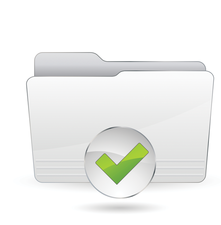Creating backups with TimeVault
Clean Archivist

© Beboy, Fotolia
Many backup solutions vie for the user's attention. TimeVault follows a simple approach and integrates seamlessly with the Gnome desktop.
The TimeVault backup tool automatically creates snapshots in the background, restoring files with the press of a button. To save space, the TimeVault tool only saves files that have changed since the last snapshot, and it simply creates links to all other files. If you delete a specific snapshot or if you lose a snapshot as a result of a crash, you only lose one version of the file.
So that TimeVault is available to each user on the system, you can assign permissions; however, only the system administrator is allowed to configure the program or delete snapshots.
Installing TimeVault
TimeVault [1] is a fairly recent development and currently available only in beta version. Because the program is quite new, you will not find prebuilt binaries in the repositories of even the most recent distributions. Source code and Ubuntu package downloads are available online [2].
[...]
Buy this article as PDF
(incl. VAT)
Buy Linux Magazine
Subscribe to our Linux Newsletters
Find Linux and Open Source Jobs
Subscribe to our ADMIN Newsletters
Support Our Work
Linux Magazine content is made possible with support from readers like you. Please consider contributing when you’ve found an article to be beneficial.

News
-
Two New Distros Adopt Enlightenment
MX Moksha and AV Linux 25 join ranks with Bodhi Linux and embrace the Enlightenment desktop.
-
Solus Linux 4.8 Removes Python 2
Solus Linux 4.8 has been released with the latest Linux kernel, updated desktops, and a key removal.
-
Zorin OS 18 Hits over a Million Downloads
If you doubt Linux isn't gaining popularity, you only have to look at Zorin OS's download numbers.
-
TUXEDO Computers Scraps Snapdragon X1E-Based Laptop
Due to issues with a Snapdragon CPU, TUXEDO Computers has cancelled its plans to release a laptop based on this elite hardware.
-
Debian Unleashes Debian Libre Live
Debian Libre Live keeps your machine free of proprietary software.
-
Valve Announces Pending Release of Steam Machine
Shout it to the heavens: Steam Machine, powered by Linux, is set to arrive in 2026.
-
Happy Birthday, ADMIN Magazine!
ADMIN is celebrating its 15th anniversary with issue #90.
-
Another Linux Malware Discovered
Russian hackers use Hyper-V to hide malware within Linux virtual machines.
-
TUXEDO Computers Announces a New InfinityBook
TUXEDO Computers is at it again with a new InfinityBook that will meet your professional and gaming needs.
-
SUSE Dives into the Agentic AI Pool
SUSE becomes the first open source company to adopt agentic AI with SUSE Enterprise Linux 16.

